The Rudhyar Audio Archives were created by and are curated by Nicki Michaels.
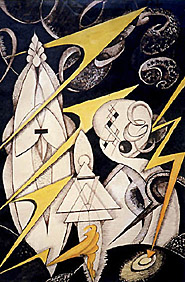
Music provided the means for Rudhyar to come to America—a performance of an ultramodern type of multimedia presentation (dance, music, light, color, incense), for which Rudhyar had written the orchestral music, was given at the Metropolitan Opera in New York in April 1917. But it was too far ahead of its time to arouse appreciation and understanding, and it was eclipsed by America’s entrance into World War I, which was announced the very night the performance was given.
Rudhyar’s music was composed at the piano, unintellectually and without attention to preconceived forms, patterns of development, or rules. It is “essentially the exteriorization of inner experiences and states of consciousness and feelings. It is subjective rather than the development of objective and intellectually analyzable patterns conditioned by our culture.”
Its “only purpose—if one can really speak of ‘purpose’ in such a context—has been to stir people, to remove emotional and traditional obstacles, vanquish psychic stagnation and set psyches, souls or minds free to be fully, eagerly, intensely themselves, regardless of what parents and society forced them to be.”
Rudhyar stressed that in composing music he was not, like so many other composers past and present, fashioning or contriving musical “objects.” For him, music is and should be the exteriorization in tone of an inner life—the flow of life (or in Ira Progoff’s sense, the psyche) itself.
From The Essential Rudhyar: An Outline And An Evocation (1983) by Leyla Rudhyar Hill.
To hear additional recordings of Dane Rudhyar’s music…
performed by Edmund Correia (1981) and Michael Sellers (1972) visit radiom.org.
All material is copyrighted. Read the License FAQ page for more details.
Third Pentagram
This piece was played by one of Rudhyar’s favorite interpreters of his music, Edmund Correia, at the September 1983 RITA Conference in Palo Alto, CA.
14 Minutes – Click here to download mp3
Autumn
Reflecting the theme of cyclicity that permeates the entire body of Rudhyar’s work, this piece was played by Edmund Correia at the September 1983 RITA conference in Palo Alto, CA. In his introduction to this piece, Rudhyar described Autumn as the season of the year, or any state in which a cycle of being has reached its conclusion and is reaching towards a “slow, beautiful disintegration—the energies of life in the Fall return to their source.”
23 minutes – Click here to download mp3
Theurgy
This piece was played by Edmund Correia at the September 1983 RITA Conference in Palo Alto, CA.
24 minutes – Click here to download mp3
Rudhyar’s Music Books & Articles
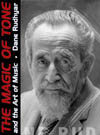
In the latter years of his life Rudhyar’s pioneering work as a composer was acknowledged. in 1978 he received the Peabody Award, and a concert of the League of Composers-International Society for Contemporary Music in New York was performed for his eighty-fifth birthday. On 10 March 1982, selections of Rudhyar’s music were performed as part of the American Composers Series at the John F. Kennedy Center for the Performing Arts in Washington, DC. The Magic of Tone comprises Rudhyar’s last word (written in 1982, three years before his passing) on Sound, Tone, Music and the Rhythm of Civilization and Culture. Read The Music of Tone free online.
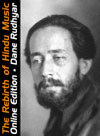
The Rebirth of Hindu Music was written in 1926 at the urging of a remarkable performer of Hindu music and dance, Ragini Devi. It was then published in India in 1928, at a time when Oriental music was neither known nor valued in the United States. Rudhyar felt what he describes as “a kind of ‘karmic’ pressure urging me to try to lead Hindu musicians to a deeper understanding of the philosophical and occult basis of the music they played,” something he’d been told they’d forgotten.
Read The Rebirth of Hindu Music free online.
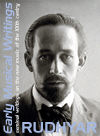
This collection of Rudhyar’s Early Musical Articles were written while he was a young man, in the 1920’s. It was his hope that these would be understood as such, and that his more mature writings on music, such as The Magic of Tone and others would be seen as his major contribution to musical literature. Read these early articles online.
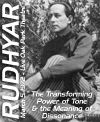
This is the transcript of a talk titled The Transforming Power of Tone and the Meaning of Dissonance that Rudhyar gave in Berkeley, CA on March 5, 1972 that was sponsored by KPFA radio, and that was part of a concert of his music. Read this transcript online.
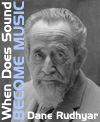
In this, Rudhyar’s last article on music, When Does Sound Become Music (1984), Rock and Space music are portrayed as two aspects of the sound of a generation. Read this article online.

In her well honed book The Essential Rudhyar, An Outline and an Evocation, Leyla Rael, Rudhyar’s wife in his later years, presents a well organized and comprehensive overview of Rudhyar’s entire body of work. Read the section on Rudhyar’s Music to understand his musical writings and compositions within a greater context. Read this section online.

